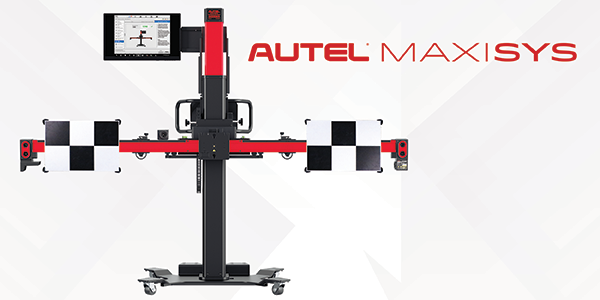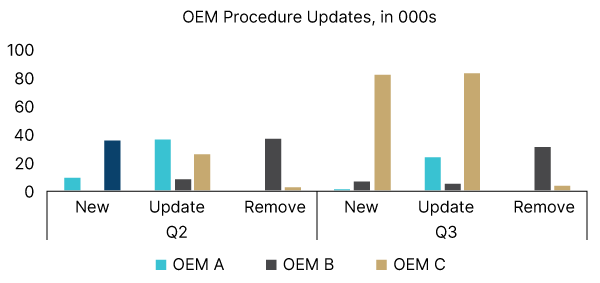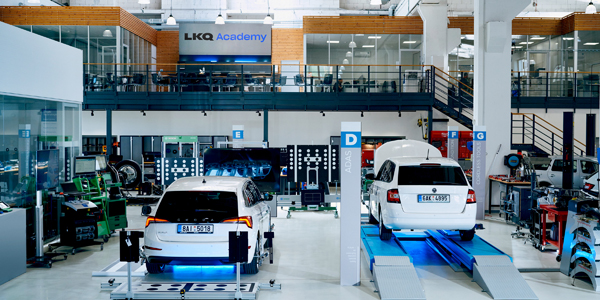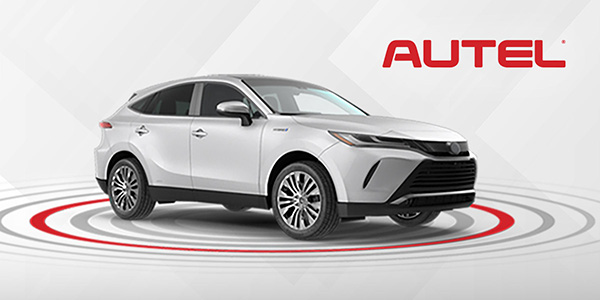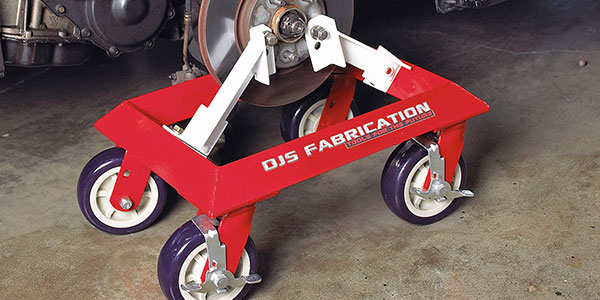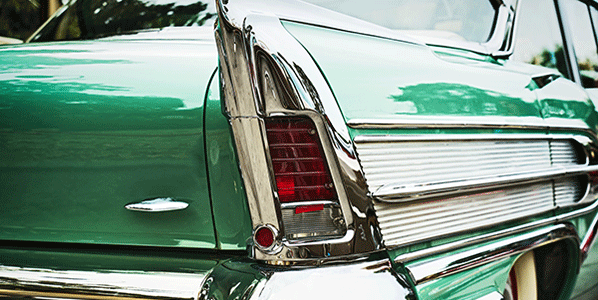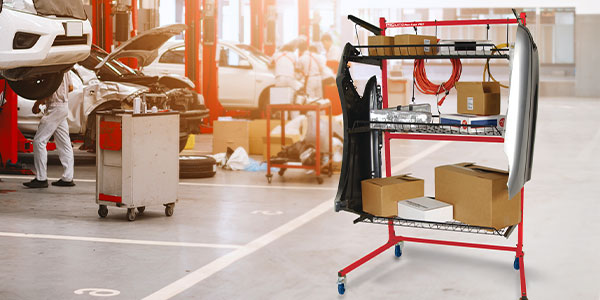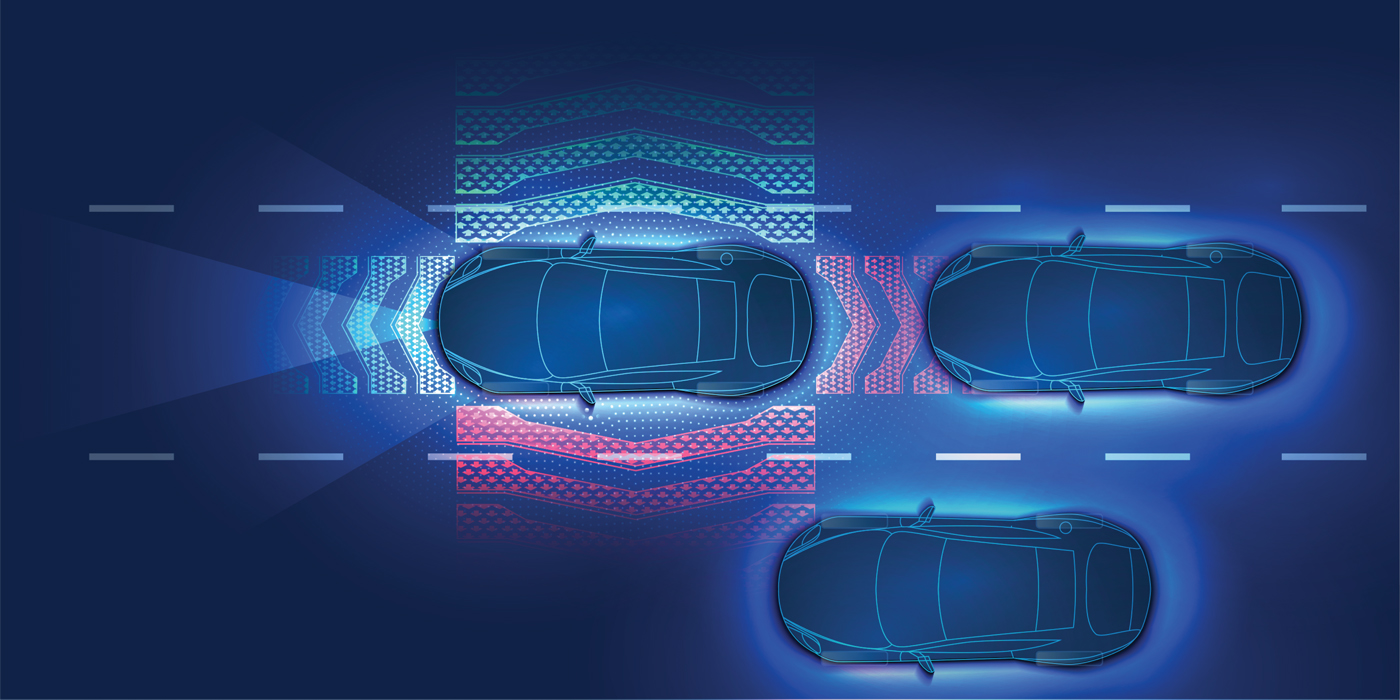This is the second part of a five-part series discussing how your shop can capitalize on the ADAS calibration opportunity. This article will help you find the best calibration solution for your shop.
In the previous article, we discussed why technicians are adding ADAS calibrations to the increasing number of repair and service orders. This includes the simple reality that so many vehicles now come standard with these safety and convenience systems, as well as the sophisticated design of modern vehicles so that a repair that seems unrelated to ADAS operations can significantly impact them.
Focusing directly on the numbers, the Insurance Institute for Highway Safety estimates that this year, more than 60% of registered vehicles in North America will be equipped with ADAS—that’s 180 million vehicles.
When we speak about complexity and interdependent systems, remember that services such as common alignments often require a forward-facing camera calibration, and any front-end work that requires removing the bumper calls for calibrating the radar sensor of the Autonomous Emergency Braking System.
ADAS will continue to grow, whether prompted by government mandates or consumer interest. If it’s not here right now, there will come a time when every vehicle you touch will have ADAS. How you deal with that fact will be integral to the success of your business.
There is undoubtedly much apprehension regarding ADAS repair and calibration in automobile repair businesses. There really shouldn’t be. Rather, every shop, particularly those in a collision, needs a plan.
How is your shop going to handle the diagnostics and calibrations?
Do you want to bring everything in-house? Or some of it? Or maybe you will seek a partner— a mobile provider or a nearby calibration center that will take on the services for your shop. There’s no cookie-cutter solution.
The best approach for your shop depends on multiple factors, including its size and layout, the training and current workload of its technicians, and, quite simply, its business plan.
Autel designed its MaxiSYS IA900 alignment and calibration system for shops wanting to bring diagnostics, alignment, and all system ADAS calibrations in-house. Ideally, if shops have the space, the technicians, the funds for equipment investment, and the desire, they should consider bringing ADAS calibrations in-house.
The financial benefit alone should be a real motivator. Consider this recent AAA study, which found that ADAS repair and calibration account for 36.7% of collision repair.
In addition to the simple financial rewards, in-house calibrations allow a shop to operate with greater efficiency, recouping the time associated with scheduling and moving the vehicle and ensuring the quality care that comes with key-to-key, in-shop service control.
Mike Ambrosino of Fuller Collision Center in Massachusetts detailed the challenges his shop faced prior to deciding to perform calibrations in-house. “One of the toughest things that we were dealing with was scheduling with dealerships, getting the vehicles out to the dealerships to be properly calibrated, and getting thorough reports from the dealership that these cars were being calibrated properly,” Ambrosino said. These issues and others led Fuller to the decision to bring ADAS in-house. After considerable time discussing what calibration system to purchase, Fuller went with Autel. “Once we made the decision to go with Autel, training was included, and they sent a trainer out shortly after the purchase for a full day. . .We have faith in the coverage from Autel that it’s going to be there, and we’re going to be able to get the job done,” Ambrosino, director of ADAS calibration and diagnostics at Fuller, said.
The decision to bring ADAS in-house has been beyond successful for Fuller. Once their process was optimized and turnaround rates drastically improved, they realized there was an opportunity to offer calibration services to surrounding shops. Since purchasing their first Autel ADAS system in 2021, Fuller Collision purchased two more and created a separate business, ADAS Diagnostic Solutions LLC, which serves Fuller Collision and about 45 shops in the area. “We’re doing about $72,000 a month (in calibration revenue), ” Ambrosino said.
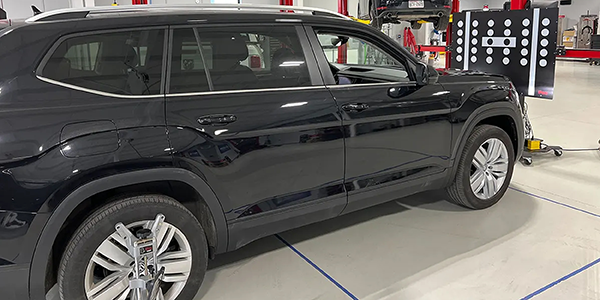
But if bringing ADAS calibrations in-house seems too daunting, subletting to a mobile and brick-and-mortar ADAS expert like Precision Diagnostics could be the solution for your shop. Similar to Fuller, Tom McGuire and Dave Zielke of Precision Diagnostics in Madison, Wisconsin, faced the same challenges when subletting calibrations. “We were seeing an increasing number of delays from a cycle time perspective, getting cars back from the dealerships, and there was probably one mobile vendor in the space then. And frankly, the service levels just were not there; they weren’t realistic with what I needed as a body shop, ” McGuire said.
So, McGuire and Zielke decided to create a calibration solution for their collision shop and for other collision shops that didn’t want to take ADAS calibrations on themselves.
“The goal (with this new business),” McGuire said, “was to be an extension of the Body Shop’s production team—that’s what I would have wanted when running shops. Hundreds of different things are pulling on them —the insurance companies, the customer, and the OEM specifications—all those pieces. [They] want somebody that can come in and look at
it and say this isn’t a problem at all, here’s what we need to do, here’s the OE information on it, here’s the process,” McGuire said.
“And we really had a vision that if there was a company that focused on the collision side as a partner, and if we did it and we did it well, there was an opportunity,” McGuire said. What started with a small shop and one van has blossomed into a fleet of 100 mobile vans and three brick-and-mortar facilities, including a 10,000-square-foot facility. Precision performs about 60 monthly calibrations per physical site, while his mobile units (all outfitted with a technician or two and an Autel MAxiSYS MA600 mobile ADAS system) perform about 4,500 ADAS calibrations combined per month, McGuire said. They service 1,500 shops across 11 Midwestern states.
Partnering with a mobile calibration expert requires adequate shop space and conditions since the work is performed at the collision shop. For those partnering with brick-and-mortar calibrators they will need to transport the vehicles back and forth between the collision shop and the calibrator. Shops that choose to sublet will have less control over cycle time and will split revenue but will not have to purchase calibration systems, hire ADAS technicians, or train existing employees on ADAS.
You have choices regarding ADAS calibrations, and how your shop navigates this challenge is up to you. Often, though, challenges come disguised as opportunities, so we invite you to visit Autel.com and review our comprehensive guide to everything related to ADAS, from the space needed to perform the most common calibrations to a detailed look at the ADAS frames, packages, and training offered by Autel. There’s even a return-on-investment calculator so you can work the numbers. And if you wish, fill out a contact form to speak with an Autel ADAS expert.
Watch for the third part of this series, where we will discuss technician training and the importance of blueprinting and documentation of ADAS calibrations to ensure comprehensive vehicle repair and commensurate insurance reimbursement.
Sponsored by Autel.

